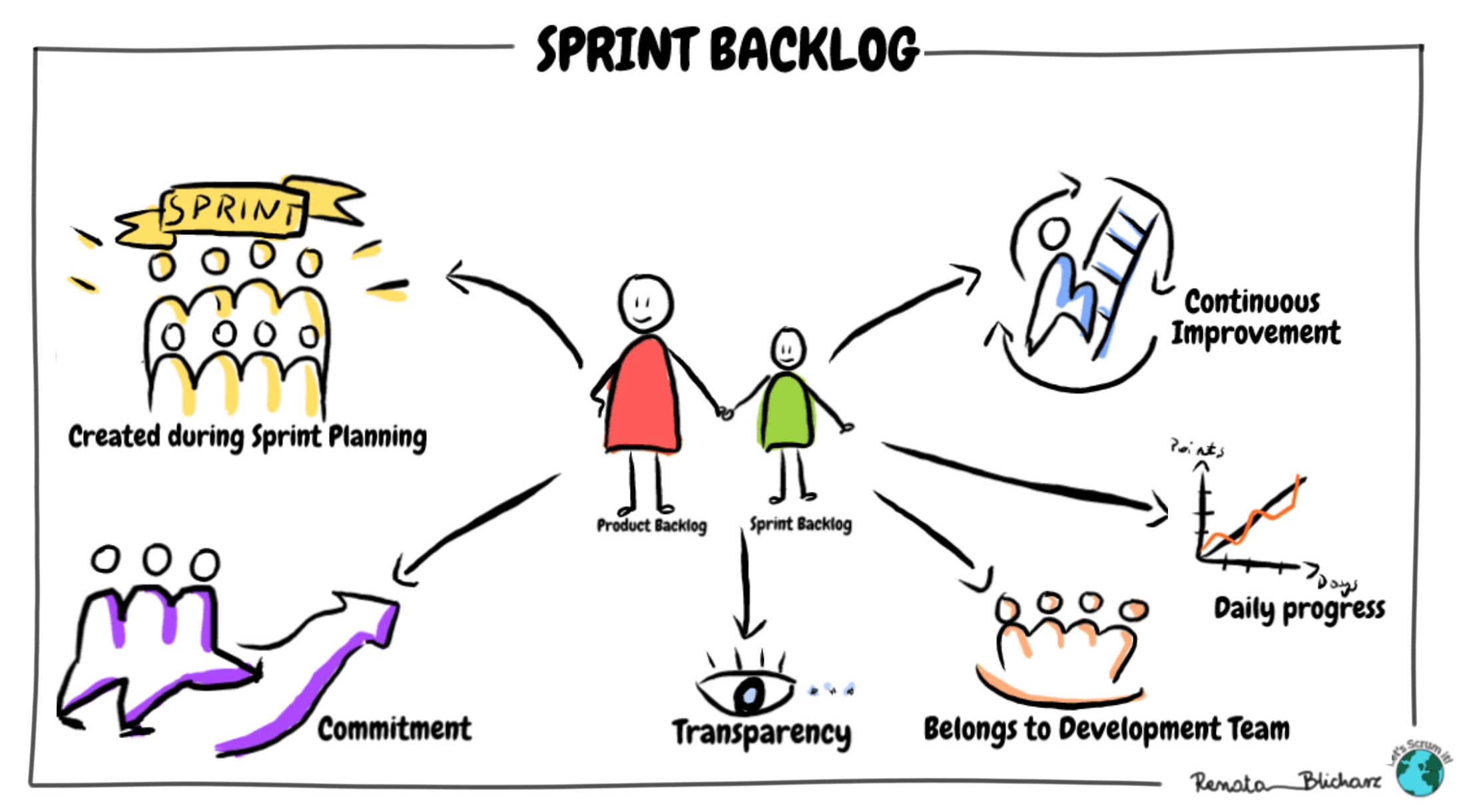
Scrum Artifacts #2 Sprint Backlog
August 24, 2020 • 4 min to read
What is Sprint Backlog? Who is responsible for managing it? How is it created? Jump in to find it out.
Table of Contents
Introduction
In my last post from Scrum Artifacts series, I described the king of artifacts in Scrum framework - Product Backlog. Today I would like to tell you more about the next artifact - Sprint Backlog.
What is Sprint Backlog?
If Product Backlog is a king or queen of the Scrum Artifacts, Sprint Backlog can be called their beloved child.
Based on the Scrum Guide:
The Sprint Backlog is the set of Product Backlog items selected for the Sprint, plus a plan for delivering the product Increment and realizing the Sprint Goal.
When & How the Sprint Backlog is created?
Sprint Backlog is created during the Sprint Planning session, when Scrum Team develops a plan for the Sprint and decides what can be "Done" during the upcoming iteration.
Product Owner presents the business objectives and proposes Product Backlog items for the Sprint.
Then the Scrum Team starts discussion about functionalities and items that will be included in the Sprint. Based on their expertise and skills, the Development Team should decide what items can be “Done” in the next iteration and what work is required in order to achieve it. That’s how the Sprint Backlog is formed.
Sprint Backlog - transparency & commitment
Sprint Backlog is a great tool in Scrum that promotes transparency and supports commitment. First of all, Development Team selects by themselves all items that will be "Done" during the Sprint. They commit to the work and decide how it will be done. They also own the Sprint Backlog and are responsible for managing their workload. It helps them to be fully committed.
What is more, having a clear understanding of what needs to be done during the Sprint, promotes Transparency and minimizes understatements.
Based on the Scrum Guide: > The Sprint Backlog makes visible all the work that the Development Team identifies as necessary to meet the Sprint Goal.
The Development Team can be fully focused on their work, which increases the value of developed increment.
![]()
Sprint Backlog & Continuous Improvement
During Sprint Retrospective, Scrum Team should select at least one improvement and include it in the Sprint Backlog.
That’s the best approach to make sure that improvements discussed on the Sprint Retrospective are part of the Sprint. It will create continuous improvement and help the Development Team to become a high performance team.
Sprint Backlog - Fully prescribed?
Initially when Sprint Backlog is created it contains enough details to be understood by the Development Team.
Does it mean that it is fully described and fixed? Definitely no. It is modified by the Development Team and emerges during the Sprint. The team can discover that they need to adjust the plan, do some additional tasks or change their approach.
It is important to mention that Sprint Backlog solely belongs to the Development Team. It means that Sprint Backlog can be changed but only if Development Team needs to update it. It cannot be updated by Product Owner or Scrum Master.
The Development Team is committed to the work and they decide what changes are required. They can add new work if it is required in order to achieve the Sprint Goal or remove tasks that are no longer required.
Sprint Backlog & Daily Progress
During the Sprint the Development Team is responsible for tracking their work progress. Sprint Backlog helps them to track total remaining work and inspect it on Daily Scrum.
Transparency of all work required in the Sprint gives the team possibility to plan their work daily and adapt if there are any changes in tasks required or impediments to be removed.
![]()
Summary
The most important information about Sprint Backlog that you should remember from this post:
It is set of Product Backlog items selected for the Sprint plus delivery plan
Sprint Backlog is created during the Sprint Planning session
It promotes transparency and supports commitment
During Sprint Retrospective, at least one improvement should be selected and included in the Sprint Backlog.
Sprint Backlog solely belongs to the Development Team
It can be adjusted during the Sprint by Development Team
Sprint Backlog is a great tool for tracking of daily progress
Would you like to read more about education?
Sign up for the Newsletter & join Let's Scrum it community!